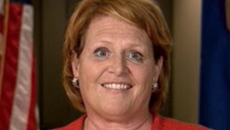Administration Bloat Isn't Just For Higher Education

Administrative bloat is a big problem in higher education, but it appears to be a big problem in K-12 education as well according to Professor Mark Perry:

The Friedman Foundation for Educational Choice notes that these trends might be acceptable if they were resulting in a better education for the kids. Unfortunately, that’s not what is happening:
Nationwide since 1950, the number of public school administrative and non-teaching positions has soared 702 percent while the student population increased just 96 percent. Over that same period, teachers’ numbers also increased — 252 percent — but still far short of administrators and non-teaching personnel (see chart above).
Notably, that hiring trend has been just as prominent over the past two decades. From 1992 to 2009, students’ numbers increased 17 percent whereas administrators and other non-teaching staff rose 46 percent. And during that time, some states actually lost students yet kept hiring more non-teachers.
Of course, those hiring patterns might be warranted if students’ academic gains kept pace. Academic outcomes, however, have not experienced similar growth. Public high school graduation rates peaked around 1970, and government data show reading scores on the National Assessment of Educational Progress (NAEP) fell slightly between 1992 and 2008. Math scores on the NAEP Long-Term Trend were stagnant during the same period.
I wonder if we don’t have this problem in North Dakota as well. According to data obtained by Legislative Council, administrative bloat is a major problem in the North Dakota University System with non-isntructional employment growing 40% since the 2003-05 biennium over just a 3.54% increase for instructional staff. But what about K-12?
As you can see in the North Dakota Budget & Fiscal Trends report below (prepared by Legislative Council), K-12 funding has increased consistently over the last decade but for most of the decade enrollment numbers in the state actually declined.
Obviously, with the state’s growth, enrollment numbers are picking back up again but you have to wonder where all that extra money went when enrollment was trending down.







